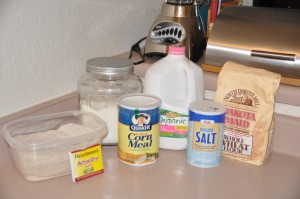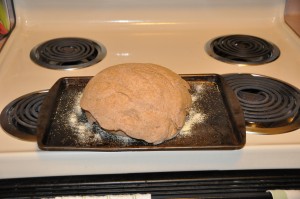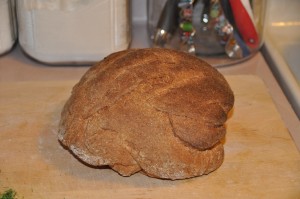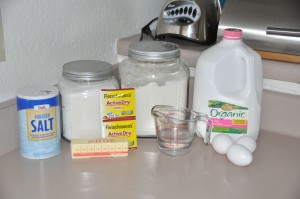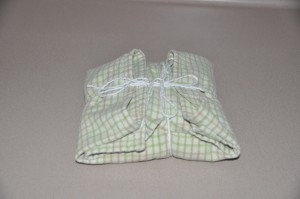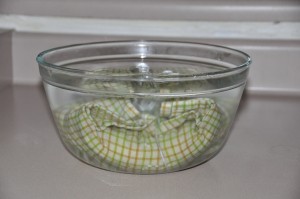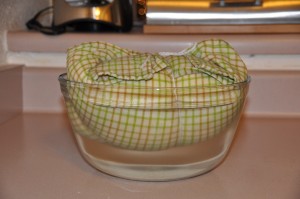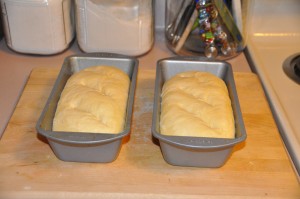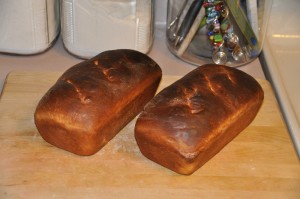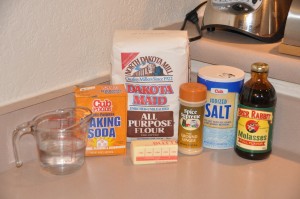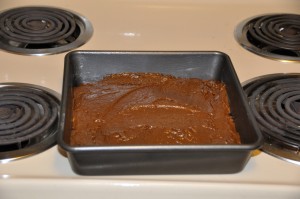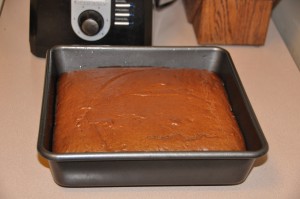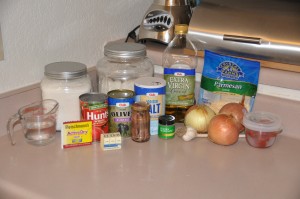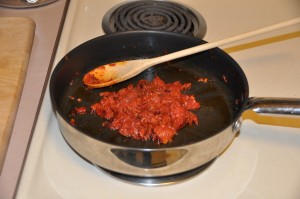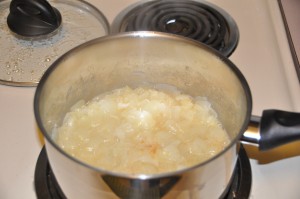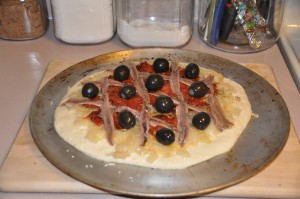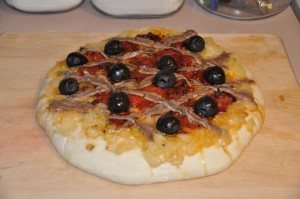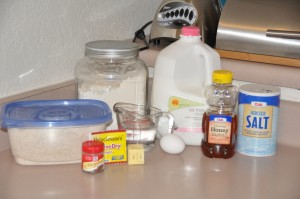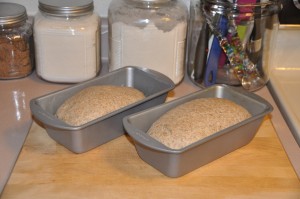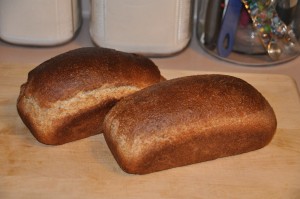“Taught in the Norwegian Government School for Domestic Science Teachers in Oslo, this recipe makes a very dense, coarse bread full of honest flavor…”
-James Beard, Beard on Bread
Since I am only baking for myself and Mike, rather than a family of 6 plus a hired man, I halved the ginormous Norwegian Whole-Wheat Bread recipe.
Stacy’s Downsized Norwegian Whole-Wheat Bread
Variation on Norwegian Whole-Wheat Bread from Beard on Bread
Ingredients:
1 package active dry yeast
2 cups warm milk (110 degrees Fahrenheit)
3 – 3 1/2 cups whole-wheat flour
1 cup rye flour
1 cups all-purpose flour
1 tablespoon salt
Cornmeal
In large mixing bowl, proof yeast in 1/4 cup of the warm milk. Add remaining milk and salt. Gradually mix in flours. Turn dough onto a lightly floured board and knead. The dough will be very stiff and difficult to work with. As an analogy, my typical bread dough is the texture of Play-Doh: very pliable and easy to work with. This dough will be the texture of the clay you struggled with in seventh grade art class.
After kneading the dough until it is a somewhat workable texture, place in a greased bowl and let rise until doubled in bulk (this took about one hour for me). Punch down and attempt to shape dough into a free-form round loaf. Hopefully, you will have more success than I did. Place loaf on baking sheet sprinkled with cornmeal and let rise until doubled in bulk (again, this took one hour for me).
At this point, it was fairly apparent that my loaf shaping skills would not have earned high marks at the Norwegian Government School for Domestic Science Teachers:
One gold star if your loaf looks better than mine. If not, that’s life. Make a few cuts in the loaf’s surface and bake in a preheated 375 degree oven for 50 minutes or until loaf is hollow-sounding when rapped with your knuckles.
I picture Norwegian Whole-Wheat Bread as something that you cook in a wood stove and serve to the men when they come in from the fields. It is a very crusty, dense loaf with more of a rye than a whole-wheat flavor. This is a bread that could plow a field with a team of oxen and then fell a few trees. However, if you live a more suburban existence, I can also attest to Norwegian Whole-Wheat Bread pairing nicely with Chicken with Mustard-Dill sauce.

